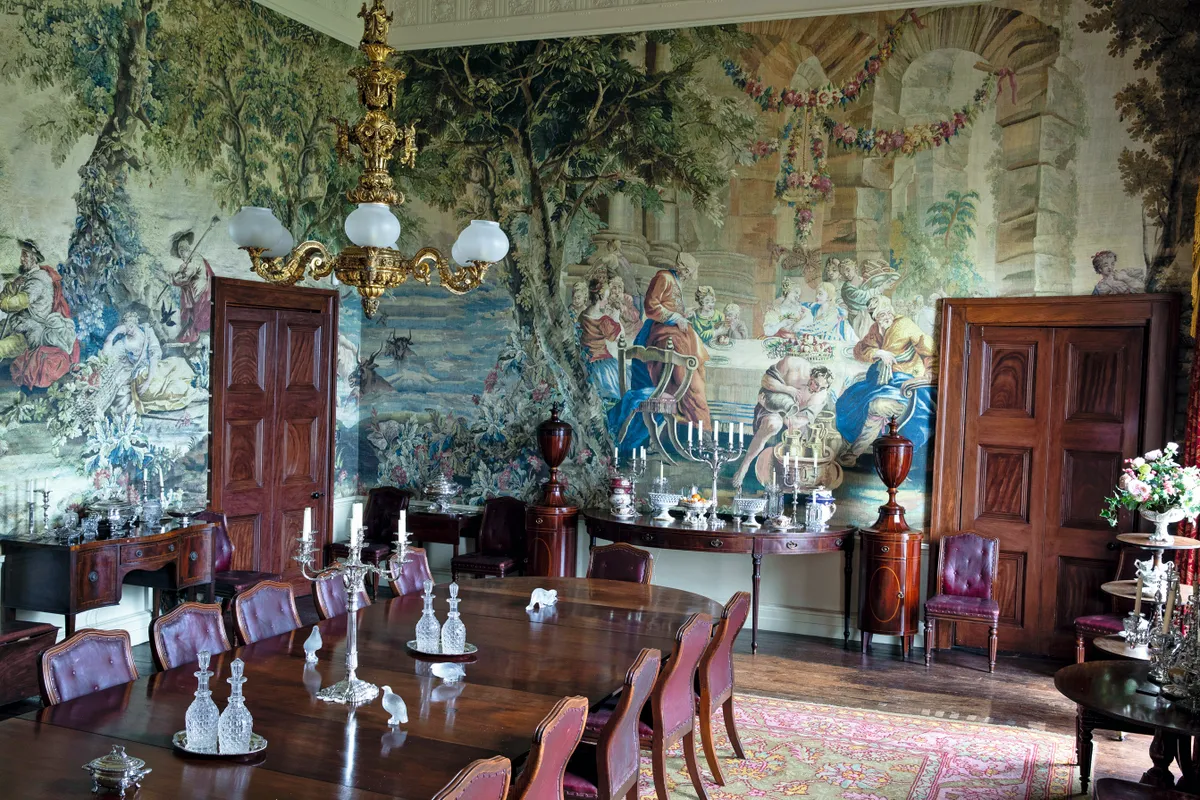Behind the brand: Watts 1874
In 1874, architects George Frederick Bodley and Thomas Garner won a commission to design the new headquarters of the London School Board. When the Board asked them to also supply interior furnishings for the offices and boardroom, they joined forces with George Gilbert Scott the Younger to set up a commercial decorating business producing elegant block-printed wallpapers and sumptuous silks and damasks. As ‘gentlemen’ architects, it didn’t do to be seen indulging in the ‘trades’, so they called their company Watts and Co, taking the name from Scott’s landlord at the time.
The three men had met in the 1850s, as Bodley and Garner had both been pupils of Sir George Gilbert Scott, the famous architect who designed the Midland Grand Hotel at St Pancras and the Prince Albert Memorial, amongst other London landmarks.
Initially, Watts and Co embraced the Gothic Revival style associated with their mentor, but later they became one of the key proponents of what became known as Queen Anne style – an eclectic look that encompassed Tudor, Palladian and Arts and Crafts elements, among several other references. These wide-ranging influences are what gave Watts and Co its edge; that and the fact it grew out of both the secular and ecclesiastical branches of its parent architectural practice.

Although the founders parted ways during their lifetimes, their company went from strength to strength and, happily, is still a family enterprise. Company director Marie-Séverine de Caraman Chimay, better known as MS, is George Gilbert Scott the Younger’s great great-granddaughter and the fifth generation to be involved in the business.
Whilst there was an understandable dip in popularity for luxury furnishings in the inter and post-war years – which hastened the demise of contemporaries such as Morris & Co – the company stayed afloat thanks to the ecclesiastical side of the business. ‘When my grandmother took over after the war, the economy was really horrible and she always said, “God Save the Queen”, because the coronation saved the company,’ says MS.
In fact, from its original HQ based in Baker Street, the company designed and made vestments for three coronations. In 1986 Watts was presented with a royal warrant, appointing the firm as an ecclesiastical furnisher to the Queen.
The decorative venture really took off again in the late 1980s under the aegis of respected creative director Fiona Flint. Its designs have been used in countless prestigious projects, from the Houses of Parliament and the Bodleian Library in the past, to Chatsworth and the glamorous revamp of private members’ club Annabel’s more recently; as well as by many high-profile designers, such as Joanna Wood and Martin Brudnizki.

‘We’re extremely lucky to work on top projects with amazing decorators,’ says MS. ‘Watts is an immensely creative company and that’s always been a part of its DNA as a design house. I really care for that and hope my ancestors would be proud of what we do today.’ While embracing the company’s USP, MS is the first to admit it’s not for everyone: ‘The end client needs to be bold. They need to embrace pattern and colour – we don’t do boring!’
Interior designer Alidad is one such visionary client and explains the appeal of using Watts in his projects: ‘There is a richness in its designs and a unique understanding of the history of textiles, which for me is incredibly important,’ he says. ‘I imagine this comes from the fact that the company was started by practising designers and architects.’
The business formally separated into its two divisions in 1987. The ecclesiastical branch, Watts and Co, remained in premises behind the Palace of Westminster, still producing items such as clerical garments and chalices. The decorative furnishings arm was named Watts of Westminster and took up residence in the Chelsea Harbour design quarter in 1995. ‘Entering the doors is a bit like walking into Ali Baba’s cave of treasures,’ says LA-based interior designer Timothy Corrigan. ‘I have never yet left without spectacular finds and a head full of inspiration.’
The company archives now span 600 years, including prints inspired by English chintzes, French toiles and Italian damasks. Patterns can be rescaled and recoloured. And while there are some stock items available, most orders are made on a semi or fully bespoke basis. Nevertheless, these are designs not just for heritage properties, but for those of us not afraid to celebrate our maximalist tendencies.
As Dr Zoë Hendon, head of collections at the Museum of Domestic Design & Architecture (MoDA) observes, ‘Watts 1874 is an example of a generations-old British company that has proved adept at reimagining designs from its archives that respond to our desire for heritage and tradition, while also suiting contemporary interiors.’
Find out more about Watts 1874